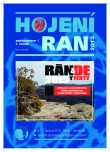Authors:
M. Kawecki
Authors place of work:
Centrum Leczenia, Oparzen
Published in the journal:
Hojení ran 7, č. Supplementum 1: 30, 2013
Category:
Abstrakta
Currently, at CLO we use 6 TNPT units, however clinical experience is based on analysis of more than 500 procedures in 256 patients treated between 2005 and 2012. 17 of this patients were treated from thermal-crush injuries, 40 patients were treated due to electrical burns, 32 patients were treated due to thermal burns and 157 patients were treated due to wound infections.
TNPT is applied in patients suffering from diabetic foot, lower extremity ulcers, in chronic venous insufficiency, post-injury chronic wounds, bedsores, thermal and electric burn wounds, thermal-crush injury, sternal wound dehiscence (after cardiosurgery).
The average time of TNP therapy was between 15 and 23 days.
Conclusion
TNPT as a method of burn and chronic wounds treatment is efficient and well tolerated by patients. Prepares clean, granulating wound bed for split-thickness skin grafts. Reduces time of healing, and the risk of lower extremity amputation or reduces amputation area. TNPT is a necessary element of combined treatment of chronic and burn wounds in conjunction with hyperbaric oxygenation, ozone therapy, targeted antimicrobial therapy, free split-thickness skin graft, grafts of cultured in vitro fibroblasts, keratinocytes and stem cells.
Štítky
Chirurgie všeobecná Sestra Domácí péčeČlánek vyšel v časopise
Hojení ran

2013 Číslo Supplementum 1
- Metamizol jako analgetikum první volby: kdy, pro koho, jak a proč?
- MUDr. Lenka Klimešová: Multioborová vizita může být klíčem k efektivnější perioperační léčbě chronické bolesti
- Realita léčby bolesti v paliativní péči v Německu
- Příčiny a možnosti ovlivnění bolesti předního kolene po implantaci totální endoprotézy
- Neodolpasse je bezpečný přípravek v krátkodobé léčbě bolesti
Nejčtenější v tomto čísle
- K 35: Možnosti léčby vlhké gangrény prstů nohy při syndromu diabetické nohy
- K 16: Možnosti lokálního ošetření fasciotomie
- K 30: ReCell Spray–On Skin
- K 10: Doporučený postup v péči o nehojící se ránu – utopie anebo realita budoucnosti?
